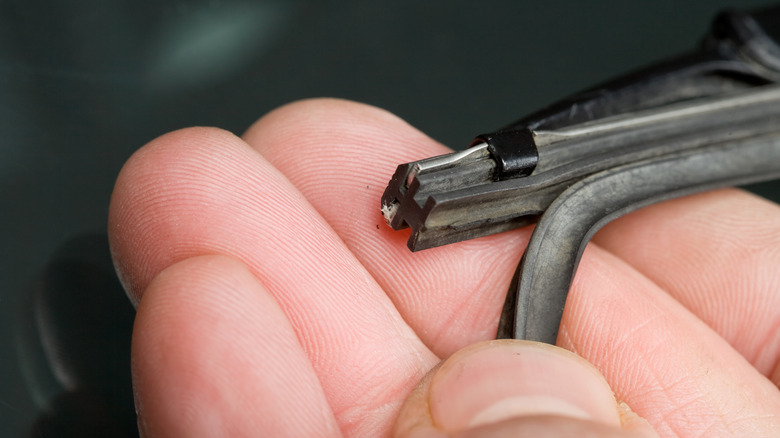How Often Should You Replace Your Windshield Wipers?
When it comes to driving safely, the most important thing a driver can do is keep their eyes on the road. However, sometimes conditions like a rainy day or snowstorm make that crucial task difficult. Thankfully, each vehicle comes equipped with a pair of eye-opening difference makers — windshield wipers.
From keeping the glass as transparent as possible to ensuring motorists can maintain the necessary visibility in harsh conditions, this reliable auto accessory rarely fails when engaged, especially if car owners exercise proper maintenance habits with the essential component of an automobile's safety. However, part of being responsible with one's line of sight while on the go is knowing when it's time to have the blades replaced.
It's recommended that people replace their windshield wipers every six to twelve months, but certain things could alter that timetable for certain car owners. Factors like location, weather, and how often the automobile is used can affect when it's time for a pair of replacements to take over. The type of wiper, whether it be a conventional or beam blade, also makes a difference in how long they can go before needing to switch out for new ones.
Keeping up with the suggested bi-annual to annual inspections of the windshield aids is a good start, but if motorists really want to stay ahead of the curve, there are several red flags to look out for that could signal that it is time for a change out the blades.
Signs its time for new wiper blades
It's not hard to tell when the right time to replace one's wipers is at hand, especially if consumers are paying attention to all the signs that prove the windshield needs a fresh set of blades. While replacing them doesn't need to happen very often, inspecting the vehicle's windshield wipers should be done every few weeks or at least every month to look for any indication that new ones need to be purchased.
After enough wear and tear, the rubber on the blades will begin to crack, come loose, or appear to have hardened to a certain extent. Once this occurs, they will start to leave streaks behind, miss substantial wet spots, proceed to frustratingly skip across the windshield, and make a rather unpleasant squeaking noise. Basically, when the rubber starts to wear out, it's a surefire signal the blades are now at risk of causing damage, operating less efficiently, and becoming unable to maintain the drive's visibility, all providing reliable indicators that it's time to switch them out.
There is also the metal on the wiper's arms and joints to consider because if motorists find signs of corrosion and rust, there is a chance the blade's frame could possibly be on the verge of breaking, leaving the windshield defenseless and potentially causing issues for other people on the road. In addition to looking over them regularly, it's also a good idea to keep the wipers clean with rubbing alcohol, and when it is time to upgrade, there are plenty of great options to choose from when it comes to the excellent selection of windshield wipers available.

